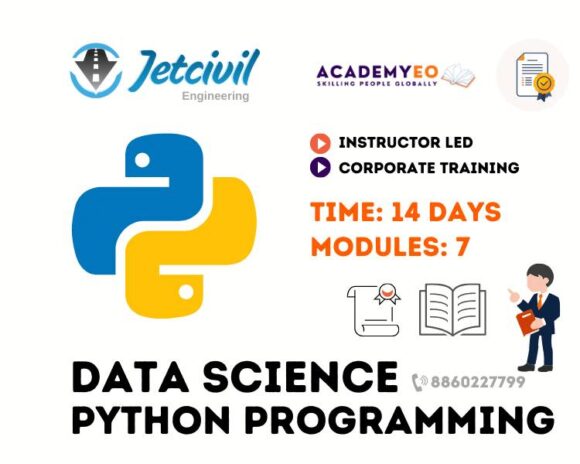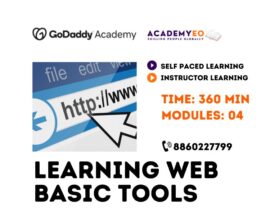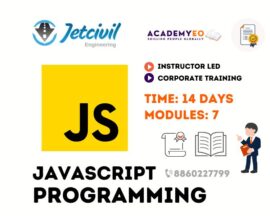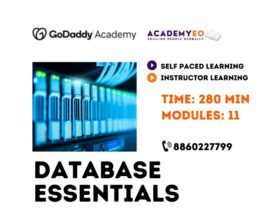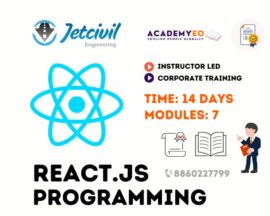Python Programming Data Science Analysis
₹ 10,000.00
- Time: 14 Days (Daily 1 hr)
- Lectures: 10 Modules
- Instructor Led Course
- Learning from Academyeo
- Certificate from Academyeo
- Mini Project & Assessment

- Description
- Curriculum
- Instructor
Description
Python Programming Data Science Analysis– Data is the new gold. This statement shows how every modern IT system is driven by capturing, storing and analyzing data for various needs. Be it about making decision for business, forecasting weather, studying protein structures in biology or designing a marketing campaign. All of these scenarios involve a multidisciplinary approach of using mathematical models, statistics, graphs, databases and of course the business or scientific logic behind the data analysis. So we need a programming language which can cater to all these diverse needs of data science. Python shines bright as one such language as it has numerous libraries and built in features which makes it easy to tackle the needs of Data science.
In this Python programming Data Science course we will cover these the various techniques used in data science using this programming language. This tutorial is designed for Computer Science graduates as well as Software Professionals who are willing to learn data science in simple and easy steps using Python as a programming language.
End to End (1 on 1) Training will be provided by our expert trainers.
Python is an interpreted, high-level and general-purpose programming language. Python’s design philosophy emphasizes code readability with its notable use of significant whitespace. Its language constructs and object-oriented approach aim to help programmers write clear, logical code for small and large-scale projects.
Python is dynamically typed and garbage-collected. It supports multiple programming paradigms, including structured (particularly, procedural), object-oriented and functional programming. Python is often described as a “batteries included” language due to its comprehensive standard library. Python interpreters are supported for mainstream operating systems and available for a few more (and in the past supported many more). A global community of programmers develops and maintains CPython, a free and open-source[32] reference implementation. A non-profit organization, the Python Software Foundation, manages and directs resources for Python and CPython development. Source: Wikipedia
Curriculum
-
Python Programming for Data Science and Analytics
Learn History of Python, Definition, Installation of software and how to execute and run it.
-
Mathematical Operation & Variables
Programs to write add, subtract, multiplication, division, power, remainder, integer value.
-
Data Types
Learn about Numbers, Strings, Lists, Tuples, Dictionary, Sets, Boolean
-
Conditional Operations
Learn about IF-Else, Nested Conditional Statements like IF, ELIF, Else
-
Looping
Learn about FOR Loop, While Loop and Nested For Loop – While Loop.
-
Functions
Learn About Function Definition, Function Structure, Function Calling
-
Classes in Python
Learn about some OOPS Concept in Python
-
Packages in Python
Learn about installation of packages through command prompt by using PIP and import of that package.
-
Data Analysis
Learn about importing .csv, .xlsx, .txt file in python and apply some statistical analysis
-
Short Quiz & Certification
A mini Project to write a program and final assessment & Certification
Instructor
Abhishek Rai – Post Graduate M.tech Degree Holder in Data Science, Machine Learning

